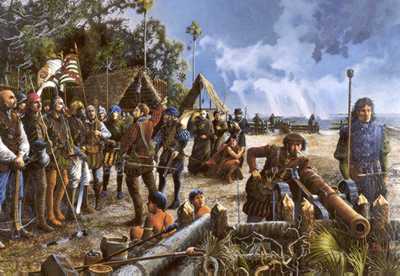In 1565, more than fifty years before the English landed at Jamestown, Pedro Menéndez de Aviles established the first successful European colony in the United States at St. Augustine, Florida.
Archaeologists and historians have been searching for the site of that first settlement since early in the 20th century, but their efforts were hampered by the fact that four centuries of continuous human occupation and development have dramatically altered St. Augustine’s landscape. These changes also severely compromised the archaeological record of the earliest stage of European settlement.

Tantalizing clues and occasional random finds raised archaeological hopes over the years, but it was not until the past decade that we were able to fit those clues to more recently discovered pieces of historical and geographical information, and more recent advances in remote sensing technology. This made it possible to recognize and identify what we now think are Menéndez period sites, on the grounds of what are today the Nombre de Dios Mission-La Leche Shrine and the Fountain of Youth Park. The archaeological discoveries of the past five years are the most recent chapters in a long tradition of distinguished historical and archaeological scholarship into Florida’s colonial past, forged by Verne Chatelaine, John Griffin, Albert Manucy, Eugene Lyon, Michael Gannon, Luis Arana and others. It was that tradition as much as anything else that led to the discoveries at the Fountain of Youth Park in 1986 and the La Leche Shrine in 1993.